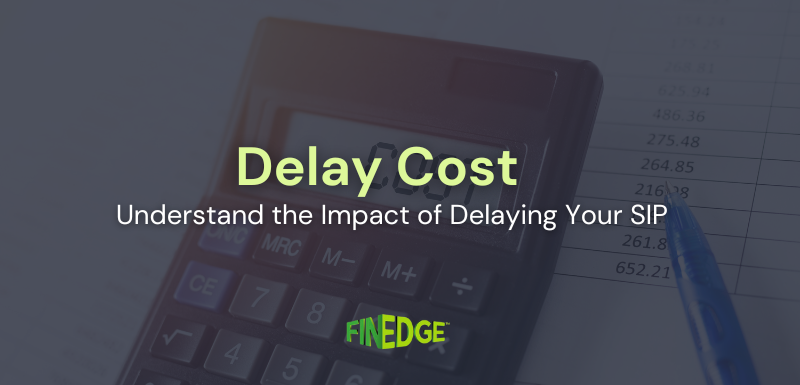How Falling Markets Can Benefit Your SIP Plan
- SIPs let you accumulate more units during market dips through rupee cost averaging.
- Continuing your SIP during downturns can significantly enhance long-term returns.
- Eliminates the stress of market timing and curbs emotional investment decisions.
Falling markets often make investors uneasy, but if you're investing through a Systematic Investment Plan (SIP), downturns could actually work in your favour. SIPs help you average your purchase cost, stay invested without trying to time the market, and benefit from compounding over time. This blog explores how your SIP can turn market volatility into long-term wealth-building opportunities.
Why SIPs Work Best When Markets Are Down
A SIP is a method of investing in mutual funds where you invest a fixed amount at regular intervals, regardless of market conditions. This means that during a downturn, your SIP buys more units at lower prices. Over time, this strategy lowers your average cost per unit, thanks to what’s known as rupee cost averaging.
For instance, if you are investing Rs.10,000 monthly in a mutual fund SIP, and the Net Asset Value (NAV) of the fund drops, you acquire more units for the same amount. When the NAV increases, these accumulated units yield substantial returns. The graph below depicts this. See how units acquired are inversely proportionate to market movement that governs the NAV or per unit price.
The Long-Term Edge: Compounding Rewards Consistency
Investors who continue their SIPs during down markets allow compounding to work more effectively. Every unit bought during a low point adds value when the market recovers. Staying consistent, even when returns are temporarily negative, multiplies gains in the long run.
"Successful investing isn’t about timing the market. It’s about time in the market."
Why You Shouldn't Try to Time the Market
Timing the market consistently is incredibly difficult—even experts rarely get it right. SIPs remove this pressure entirely. You don’t need to worry whether it’s the right time to enter or exit. You just invest regularly and stay focused on your goals.
Volatility Helps SIPs
Market volatility causes NAVs to fluctuate, which works in your favour as an SIP investor. In falling markets, the same investment amount gets you more units. Over time, this reduces the average cost and boosts returns when the market stabilizes.
Real Scenario:
Investors who stayed invested through the 2008 crisis or the COVID-19 crash saw excellent returns when markets recovered. The key was not stopping SIPs when things looked uncertain.
Watch the Video To Learn More!
Avoid Emotional Investing
Downturns trigger fear and panic. Many investors stop their SIPs or redeem prematurely, locking in losses. SIPs instil discipline and prevent emotional decisions. By investing regularly, you stay on track to meet your long-term financial goals.
A Financial Planner Can Help You Stay the Course
While SIPs are effective, choosing the right funds is crucial. An investing expert can:
-
Suggest funds aligned with your goals and risk appetite
-
Reassess your plan during market phases
-
Ensure your portfolio stays goal-based and diversified
FAQs
Your Investing Experts
Continue Reading
Cost of Delay in Investment: Why Starting Early Matters
Many investors assume that postponing their SIP temporarily has a minor impact. In reality, the true loss comes from the compounding opportunity that disappears with every missed month. A consistent approach is far more powerful than trying to compensate later by investing larger amounts.
How to Build a ₹1 Crore Portfolio: A Practical Guide for Indian Investors
Reaching ₹1 crore isn’t about luck or timing, it’s about discipline, consistency, and the patience to let compounding work in your favor.
Are Mutual Fund SIP Investments Low Risk?
Many first-time investors believe that SIPs are a low-risk way to enter the market. But is that really true? The idea that SIPs offer guaranteed safety can be misleading, especially if the underlying fund is equity-oriented. This blog breaks down the real risk profile of SIPs and helps you understand how they work in volatile markets.




.jpg)